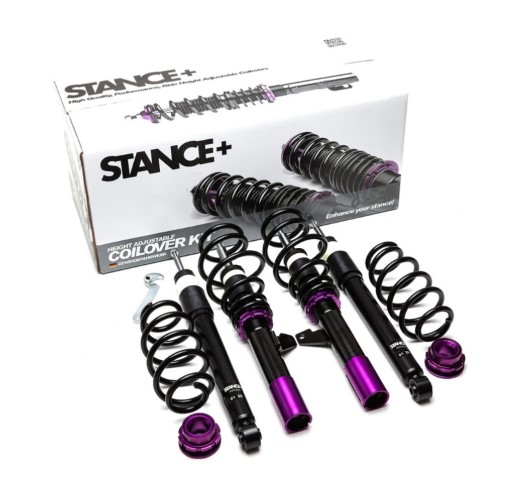
When it comes to enhancing your vehicle’s performance, many automotive enthusiasts turn to modifications that can improve handling, ride comfort, and overall driving experience. Among the top upgrades is the installation of coilovers. This suspension upgrade offers a combination of adjustability and precision, making it a popular choice for drivers who are serious about performance. But what exactly are coilovers, and how can they improve your vehicle’s performance? Let’s dive into this comprehensive guide to find out.
What Are Coilovers?
Coilovers are a type of suspension system that combines both a coil spring and a shock absorber into a single unit. Unlike traditional suspension systems where the shock and spring are separate, coilovers integrate them to provide better handling, ride height adjustment, and enhanced performance. This setup allows drivers to fine-tune their suspension for different driving conditions, whether it’s for street use, track racing, or off-road adventures.
Benefits of Coilovers
Coilovers are more than just an aesthetic or performance upgrade. They offer several key benefits:
- Adjustable Ride Height: One of the standout features of coilovers is the ability to adjust your vehicle’s ride height. Whether you want to lower your car for a more aggressive stance or raise it for better clearance, coilovers allow you to achieve your desired look and functionality.
- Improved Handling: By stiffening the suspension, coilovers help reduce body roll during cornering, which significantly improves your vehicle’s handling. This is especially beneficial for high-speed driving or track use.
- Customization: Coilovers provide a range of adjustability options, including dampening settings and preload adjustments. This allows you to tailor the ride quality to your specific preferences, whether you prefer a stiff ride for performance driving or a more comfortable setup for daily use.
- Better Weight Distribution: With their adjustable nature, coilovers can help balance the weight distribution of your vehicle. This is crucial for achieving optimal performance, especially in performance-driven vehicles.
Types of Coilovers
There are different types of coilovers available, each suited to various needs and budgets. Understanding the differences will help you choose the right type for your vehicle.
1. Full Coilovers
Full coilovers are the most common type used in performance vehicles. These systems come as a complete unit, including both the spring and damper. Full coilovers provide the best performance enhancements, but they are often more expensive than other options.
2. Sleeve Coilovers
Sleeve coilovers are a more affordable alternative to full coil overs. They allow you to convert your existing suspension system into a coilover setup. While they don’t offer the same level of performance improvement as full coilovers, they provide a cost-effective solution for those looking to upgrade their suspension.
3. Lowering Springs with Adjustable Shocks
While not technically coil overs, lowering springs paired with adjustable shocks offer a similar effect. They provide height adjustability and performance improvements but don’t offer the same range of adjustments as true coilovers. This option is best for drivers looking for a moderate upgrade without going all-in on a full coilover system.
Installation Process
Installing coilovers is a process that requires precision and some technical knowledge. While it’s always best to have a professional perform the installation, it’s helpful to understand what’s involved.
- Lift the Vehicle: Before you can start the installation, you’ll need to lift your vehicle safely using a jack and jack stands or a lift.
- Remove the Existing Suspension: The next step is to remove the stock suspension system. This typically involves unbolting the shock absorbers and springs.
- Install the Coilovers: Once the old suspension is removed, you can install the coil overs by bolting them into place. Be sure to follow the manufacturer’s instructions carefully, as incorrect installation can lead to performance issues or even safety hazards.
- Adjust the Settings: After installation, you’ll need to adjust the ride height, preload, and damping settings. This can be done manually, and some coilover systems come with preset settings to make the process easier.
- Test Drive and Fine-Tune: After installation, it’s important to test drive your vehicle to ensure everything is working properly. You may need to make additional adjustments based on how the vehicle handles and your personal preferences.
Maintenance Tips
While coilovers are built for performance, they still require regular maintenance to ensure they last and continue to perform optimally. Here are some tips to keep your coilovers in top shape:
- Regular Cleaning: Dirt and grime can build up around your coil overs, especially if you drive in harsh conditions. Regular cleaning helps prevent rust and keeps your suspension working smoothly.
- Check for Leaks: Periodically check for oil leaks around the dampers. Leaks can indicate worn seals, which will affect the performance of your coilovers.
- Lubricate the Threads: To ensure you can easily adjust your coil overs, regularly lubricate the threads with an anti-seize compound. This will prevent them from becoming stuck due to corrosion.
- Inspect for Wear and Tear: Over time, the components of your coil overs can wear down. Regularly inspect the springs, dampers, and other components for signs of wear and replace them as needed.
Is the Investment Worth It?
For many enthusiasts, the answer is a resounding yes. Coilovers provide a level of customization and performance enhancement that is hard to beat. Whether you’re looking to lower your car for aesthetic reasons or you need the precision handling for track use, coil overs are an excellent investment.
While they may come with a higher price tag compared to other suspension upgrades, the performance benefits, adjustability, and potential for personalization make them a worthwhile consideration for anyone serious about improving their vehicle’s performance.










